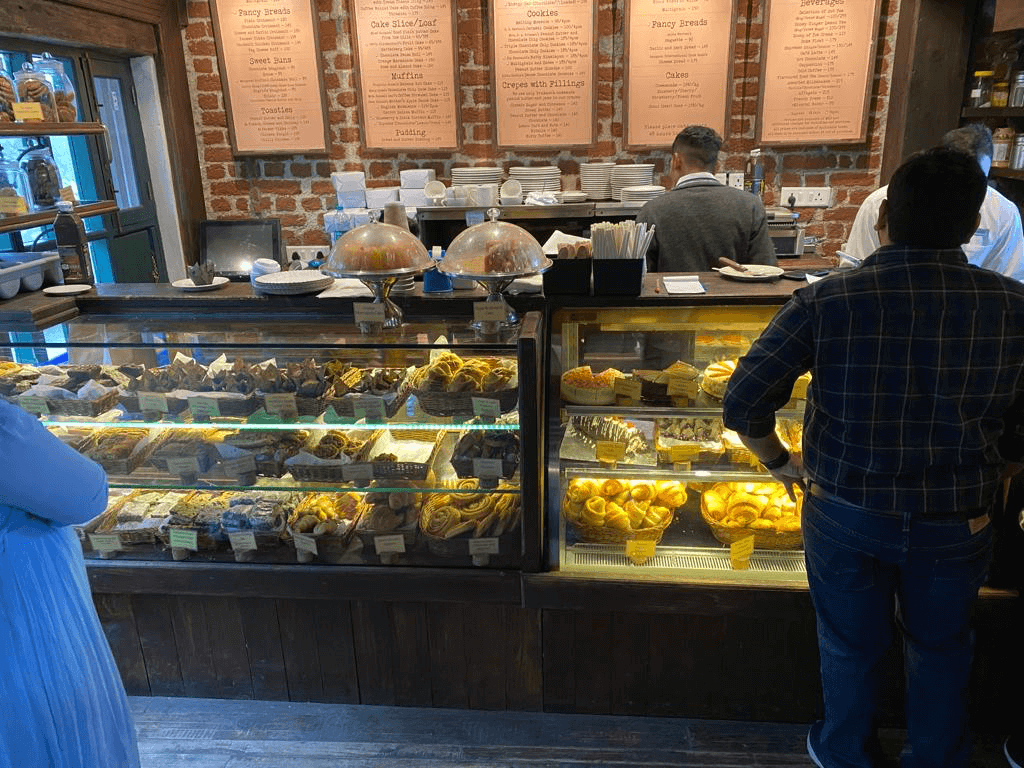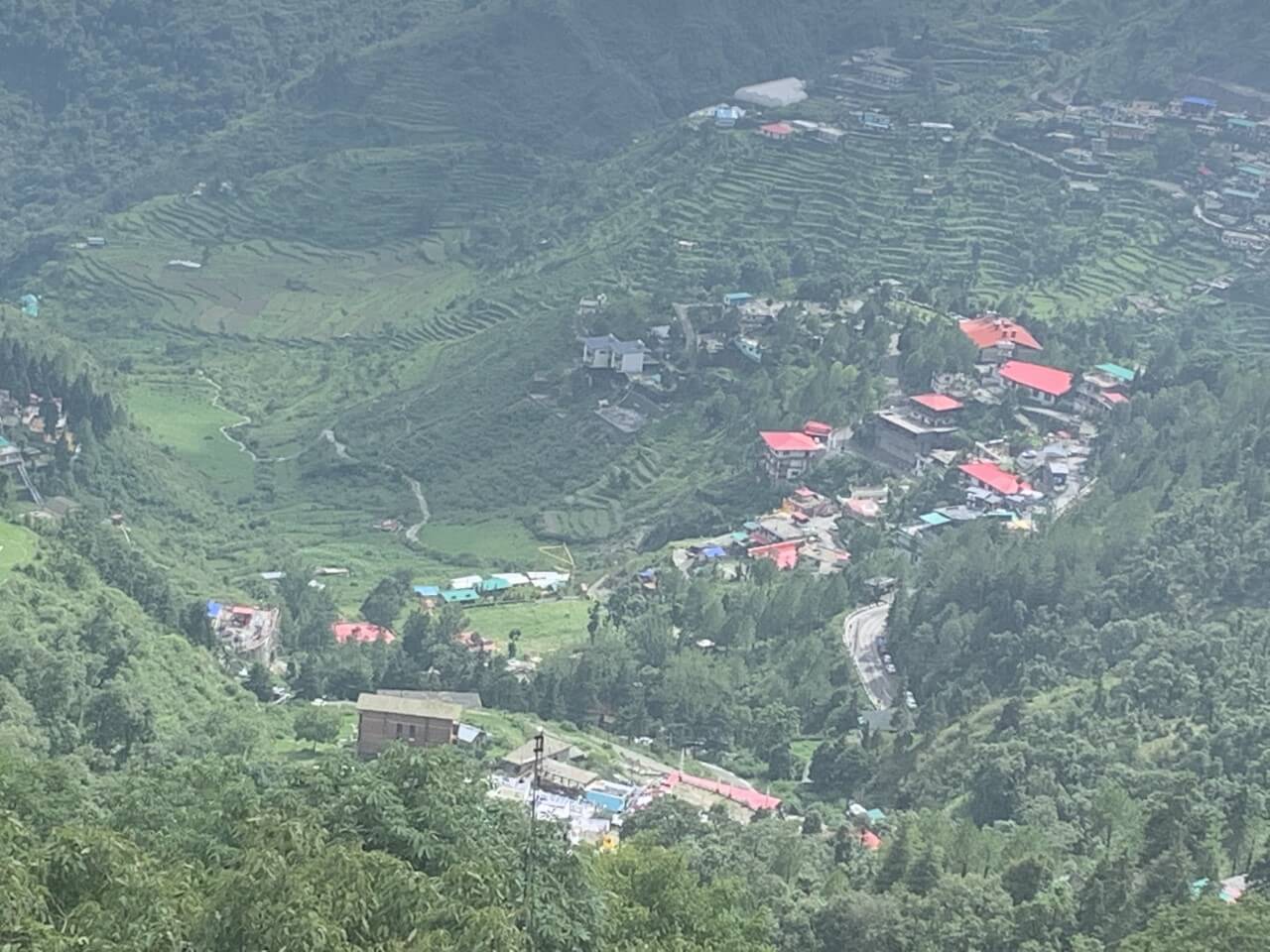Dr Roopali tells us about the scorching heat, monsoon at Mussoorie and more – exclusively for Different Truths.

The monsoons are elsewhere, and your town is burning hot. Air conditioners breathe their last, unable to keep up. It’s too hot for the AC repair fellow to visit you. The electricity department decides it is “enough, no more!” You have shuttered your windows to fix the cooling device. Now you sit gasping like a fish out of water. Some air is – and was – better than no air.
So, what do you do? Watch the tips of your Canna plants burn a deep brown while you cringe.
A genuine fear of gasping to death overwhelms you. Concerned friends frequently call from their lovely hospitable homes in Mussoorie.
“Come here!” they shriek into the phone. “Get away from that heat….”
“Come here!” they shriek into the phone. “Get away from that heat. The monsoons are coming to us. You may not be able to go hiking. But you can sip hot tea in the cool mountains and stare at dense forests through large glass windows with billowing curtains!” “Quick”, I shriek to the spouse. “Call our favourite cab guy before he takes off with weekend merrymakers.”
Locking up a household with three rambunctious dogs meant cajoling helpful folks to feed them and stay the night. We travel light and own little. So, thieves would be disappointed. But our furry family members are traumatised without human presence. We had to hire a human companion for them.
The weekend promised hours of traffic jams. Fancy cars stalled or snaking up the mountain filled the news channels. Delhi’s rich and nearly rich spend their precious time on the road to Mussoorie, cursing and swearing with weeping kids and grumbling spouses and impatiently dreaming of aloo burgers, pizza, fizzy drinks, chaat and chholey bhatoore. And of course, shopping.
Up in the hills of Mussoorie, the colonial barra sahibs and memsahibs groan, toss and turn in their graves …
Up in the hills of Mussoorie, the colonial barra sahibs and memsahibs groan, toss and turn in their graves at the turn of events. What happened to shepherd’s pie and caramel custard? Where are the delectable scones with rhubarb jam?!
Who Established Mussoorie and When?
History has it, that Mussoorie was established in 1825 by Captain Ernest Young and Mr Shore, a government official. They built a shooting lodge together. Gradually more people began to appreciate the environs. That is how the Landour cantonment area came about. Mussoorie town slowly grew ten kilometres away. Soon it became an attractive getaway for British officials and Indian Maharajas, and other wealthy Indian people. You know, the barra sahibs and memsahibs.
A quaint bakery called Landour Bakehouse recreates much of what the barra sahibs and memsahibs enjoyed. It sits in Sisters Bazaar, a narrow back lane of sorts. Although of recent origin, its interiors are reminiscent of a 19th-century kitchen. A hill cabin, perhaps.
The town’s most famous resident, the author Ruskin Bond, has recently revamped this antique recipe book.
Coffee and croissants, chocolate truffles, hot scones, doughnuts, brownies, grilled chicken sandwiches, lemon tarts, rind cakes and more. The recipes are taken from a 100-year-old book put together by English ladies who ran a book club. The town’s most famous resident, the author Ruskin Bond, has recently revamped this antique recipe book.
A colourful restaurant called Domas serves exquisite Chinese, Bhutanese, and Tibetan cuisine. The ceiling is a work of art. Thangka artists painted them. A thangka is a Tibetan Buddhist painting on cotton silk appliqué, usually depicting a Buddhist deity, scene, or mandala.
Artistic masks and other artefacts and notes praising the restaurant are plastered everywhere. The waiters seemed disoriented and not too sure what we wanted.
Soon after our arrival, the monsoons arrived in the deep dark forests …
Soon after our arrival, the monsoons arrived at the deep dark forests and hills with an orange alert for storms. We were at Aranyaka Upanishad. (See Different Truths https://www.differenttruths.com/travel-getaways/history-culture/aranyaka-upanishad-is-ithaca-and-home-in-the-forest-hills-of-mussoorie/ ).
It is a friend’s forest resort where the air is clean and dustless. Some nights on sloping terraces, you can hear the padded feet of leopards and Bagheera trying to make their way across the forest. And when the rain stops, you walk a trail and return home with half a dozen leeches stuck to you.


They hung bloated with our blood. We peeled them off, and our blood spilt on the floor. Monsoons bring leeches crawling out of forests. Our city friend screamed; the military spouse was cool. He was acquainted with these creatures in the dense rain forests of Northeast India.
I was polite about them and to them. Afraid to upset our hostess. She loves her forest creatures. Big and small. And so, do I.
Mussoorie is also home to the Lal Bahadur Shastri National Academy of Administration…
IAS Training Academies and Schools
Mussoorie is also home to the Lal Bahadur Shastri National Academy of Administration, the Indo-Tibetan Border Police’s Training Academy, and premier boarding schools.
Here are the more than a hundred-year-old Hampton Court Preparatory Boys’ School; Asia’s oldest international boarding school, Woodstock, established in 1854; Hampton Court Preparatory Boys’ School; St. George’s College, and the Wynberg Allen School.
An institute to teach Hindi to missionaries, established in 1800, still stands.
After a good forest immersion, we moved out of our forest home for a different experience. We were in Mussoorie now. Friends invited us to stay with them for a while. We could see the city lights twinkling from our new location on a clear, rainless night. Homes and hotels on hillsides flickered away. Even the remote Doon valley and the city of Dehradun. Home-cooked Garhwali food warmed the cockles of our hearts.
Somedays, the clouds would cover the hills and homes, and everything would disappear in the pitter patter of monsoon rains.
Somedays, the clouds would cover the hills and homes, and everything would disappear in the pitter patter of monsoon rains. The cool mountain air from the humid plains revived and rejuvenated our flagging spirits.
Monsoon & Landslides
The rains had come to the hills, and we let ourselves soak in their abundance. “It is time to go back,” the clouds thundered. And streaks of lightning lit up the sky and showed us the way. The winding mountain road went past forests of deodar trees. Soon pelting rain could bring landslides tumbling down the mountains.


Our cabbie arrived promptly to pick us up. His favourite Bollywood playlist is blaring. An hour later, we were in the city of Dehradun. Famous for the Indian Military Academy, the Doon School and the RIMC (Rashtriya Indian Military College).
The garden was shining green, the lawns were flooded with rainwater, and the plumeria trees glowed with white flowers.
It rained all the way home. The garden was shining green, the lawns were flooded with rainwater, and the plumeria trees glowed with white flowers. They seemed bigger and brighter than before. The hibiscus tree had bloomed a hundred red flowers. The pomegranate tree sported a few fruits. The banana tree had shot up. Its leaves are big and promising.
Our three dogs rushed at us, whining. Where did you go? Where did you go? They wagged their tails and rubbed their bodies against our legs.
We went in search of the rains, we said. We went in search of the shower.
Photos by the author







 By
By

 By
By